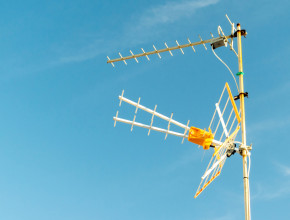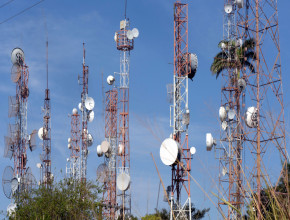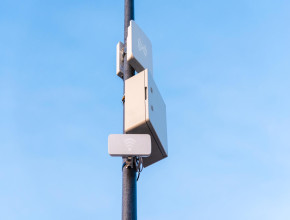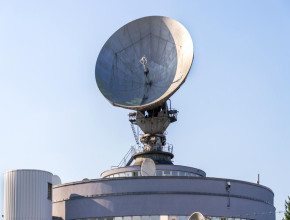
The antenna is an important thing to improve radio communications and signals. Narrowband Antenna is one of the best antennas for radio communications. It can work in various environments and applications. One can also use this antenna in manpack military radios and handheld devices.
The wideband antenna is used in various broadband communications. It is widely used in many radio channels that need many frequencies. It works differently from narrowband antennas.
In this blog, we will discuss everything related to narrowband antenna and wideband antenna, their special features, and the major differences between these two antennas.
Meaning of Narrowband antenna
Narrowband antenna is one of the best antennas used for radio communication. Apart from that, you can also use a narrowband antenna for commercial voice communications. It is widely used in marine mobiles and land mobiles.
Benefits of Narrowband antenna
A Narrowband antenna is a kind of UHF antenna used in radio communications. It is normally used in applications where signal bandwidth works within the band of a frequency channel.
In this type of antenna, the signal bandwidth does not exceed the bandwidth of the frequency channel. This antenna divided the total frequency spectrum into various narrowband channels. Let us have a look at the major benefits of a narrowband antenna.
- This antenna has a narrow bandwidth and does not overlap with interfering signals.
- Narrowband antennas need less operating power.
- You can use this antenna in short-range applications that need transmission over a shorter distance.
- Narrowband antennas are widely used in portable mobile devices, remote keyless entry devices in cars, and RFID. It can be also used in fixed-location wireless devices.
Meaning of Wideband antenna
The wideband antenna is different from narrowband antennas. Operational Bandwidth in a wideband antenna exceeds the channel’s bandwidth. Wideband antennas are used in several broadband communications that require a wide range of frequencies. In this antenna, the whole spectrum is available for use in wideband systems.
Benefits of wideband antenna
Wideband antennas are better than narrowband antennas. They have a broader frequency than wideband antennae. Signal bandwidth exceeds the channel bandwidth in a wideband antenna. Apart from that, wideband antennas also give many other benefits such as:
- Wideband antennas have a higher rate of data transmission than narrowband antennas.
- Unlike narrowband antennas, wideband antennas provide a full portion to be used by the carrier. CDMA is a kind of wideband antenna.
- Wideband interferers do not suffer loss because of selective fading.
- Paths in wideband signals are added algebraically and have higher transmission signal power than narrowband antennas.
- The wideband antenna is a kind of High Gain Tetra Antenna used in applications like 5G wireless devices, connected cars, and video conferencing.
Major differences between the narrowband antenna and wideband antenna
After discussing the definition of both these antennas, we will discuss the major differences between these two antennas. Have a look at the differences between a narrowband antenna and a wideband antenna:
-
Frequency spectrum
In a narrowband antenna, the frequency spectrum is divided into several channels as allowed by the frequency. On the other hand, a wideband antenna is a kind of Vhf antenna that allows using the whole portion of the frequency spectrum by the users.
-
Operating power
A Narrowband antenna is a type of UHF antenna that works on lower operating power. On the other hand, wideband antennas work on higher operating power. Wideband antennas carry more information than narrowband antennas. Apart from that, a wideband antenna also takes information to a longer distance than a narrowband antenna.
Additionally, wideband antennas can overcome higher levels of signal interference. On the other hand, narrowband antennas cannot overcome signal interferences as they work on lower operating power.
-
Channel-to-channel isolation
In a UAV Anti Drone Antenna, transmitted energy is concentrated in a small portion of the spectrum. So, narrowband antennas have higher channel-to-channel isolation than wideband antennas. On the other hand, the wideband antenna has lower channel-to-channel isolation than a narrowband antenna.
-
The complexity of the antenna
A Narrowband antenna is not as complex as a wideband antenna. On the other hand, the wideband Military Discone Antenna needs a more diverse stage network and circuits. It is easier to use a narrowband FTS antenna than a wideband antenna.
-
Data rate
Narrowband antennas have a lower rate of data transmission than wideband antennas. Contrary to that, a wideband antenna supports a higher rate of data transmission. In simple terms, narrowband antennas help in getting shorter-distance communication. Wideband antennas allow for speedy and long-distance communication.
-
Signal interference
In a narrowband Jammer Antenna, there is very low or no chance of overlapping with interfering signals. Contrary to that, the wideband antennas increase the chance of overlapping with interfering signals.
Narrowband antennas have smaller bandwidth than wideband antennas. They do not need several filters to get a signal-to-interference-plus-noise ratio.
Wideband antennas need more filters than narrowband antennas to remove unwanted noise from a signal.
-
Strength of signals
In narrowband antennas, the signal fades slowly across several frequencies. You will not get any effective results even after adding more frequencies to the narrowband antennas.
A wideband antenna will work more effectively by adding more frequencies. It will send better signals in different frequencies. Wideband antennas give weaker signals than narrowband antennas because the band frequency widens in wideband antennae.
If you want strong signals in radio communication, pick the best quality narrowband antennas. These antennas have narrow frequencies and do not overlap the interfering signals as well.
Final words
These are some of the major differences between a narrowband antenna and a wideband antenna. You can use narrowband High Gain Helical Antenna in applications that need short frequency range. On the other hand, wideband High Gain ATC Antenna is used in various applications such as IoT devices and 5G wireless devices.
These major differences will help you to know the features of both antennas properly. Wideband antennas are more popular than narrowband antennas today as they can be used in different applications of daily use.





